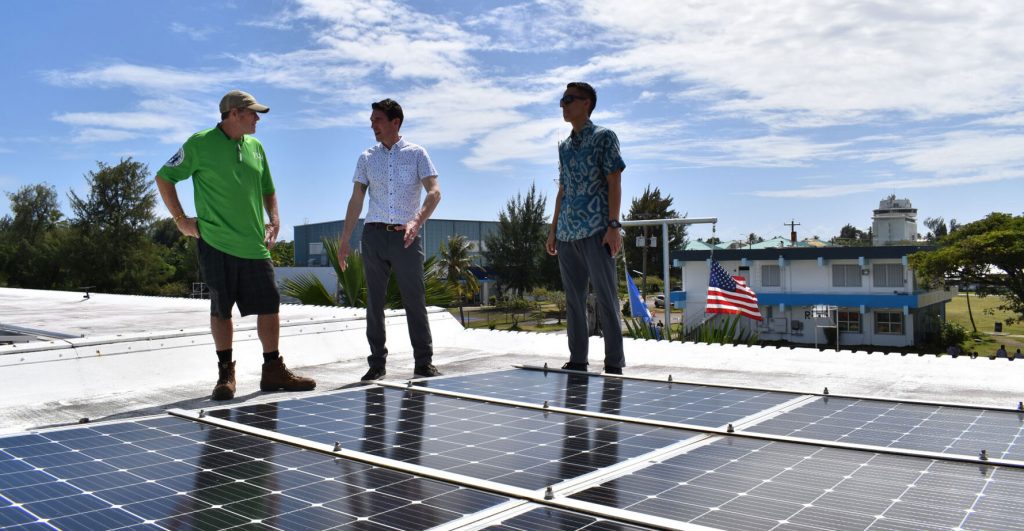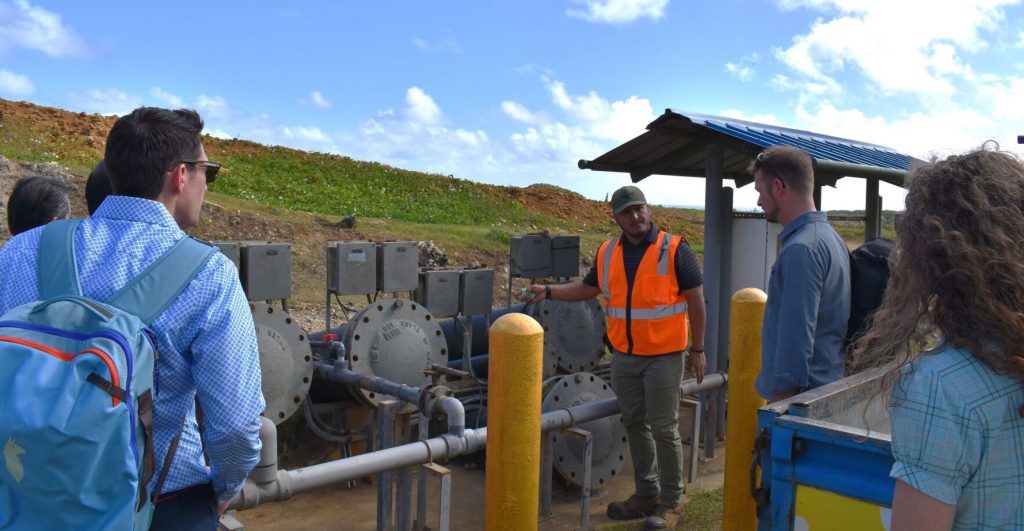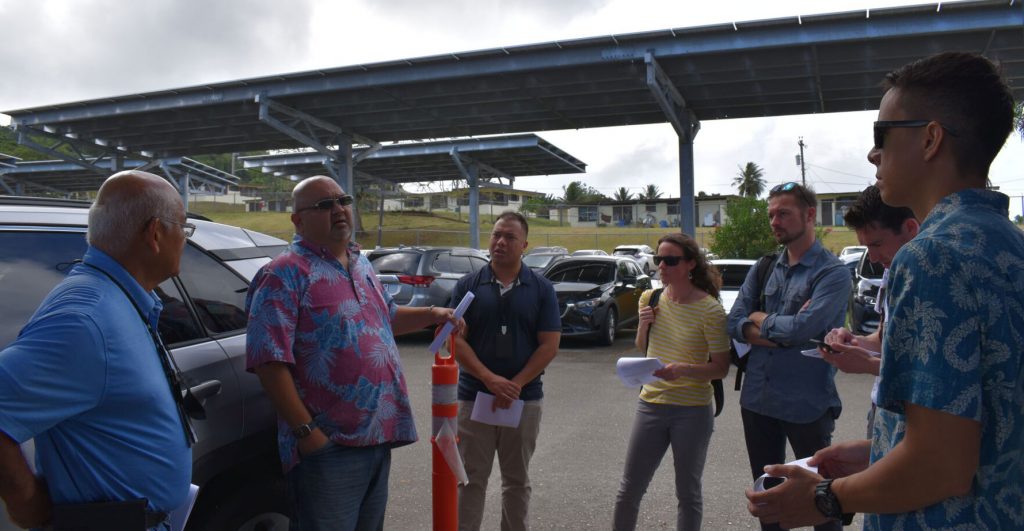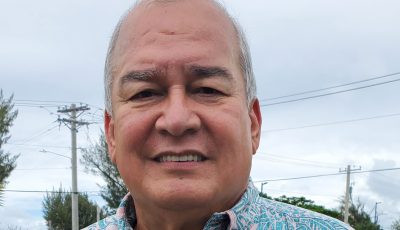NMI’s alternative energy options for Marpi landfill assessed

Program Manager for Facilities and Maintenance for the CNMI Public School System Glenn Smith, the U.S. Department of Energy’s Pete Gingrass, and Office of Planning and Development solid waste project coordinator for Saipan Michael Johnson discuss the alternative energy systems currently present at Marianas High School during a tour of the school’s solar panel array on Feb. 7. (CNMI OFFICE OF PLANNING AND DEVELOPMENT)
Representatives from the U.S. Department of Energy and the Pacific Northwest National Laboratory were in the CNMI from Feb. 6 to 9 for preliminary discussions and site visits as part of the Marpi Landfill Power Supply Feasibility Study. This study seeks to identify power supply options that will provide 24/7, reliable, and resilient energy to the Marpi landfill on Saipan.
A draft feasibility report will be reviewed by the project team and shared with the public at the next All Planners Task Forces meeting, tentatively scheduled for April 10, 2023. A final version of the feasibility report will be submitted by DOE and PNNL in May.
The Marpi landfill has been powered by diesel generators since the landfill began accepting solid waste in 2003. Identifying and implementing sustainable and resilient ways to power the landfill is critical as the CNMI works to reduce climate pollution and achieve environmentally compliant and sustainable waste management systems.
Resilient and feasible alternative energy options that are currently being assessed by DOE and PNNL include solar and wind systems with battery energy storage systems. The purchase of additional diesel generators to provide redundancy for the other clean energy systems is also being assessed as a possible alternative.

Project Manager for Micronesian Environmental Services, LLC James Benavente, third from right, points out a landfill leachate pump and the existing electrical systems that power it during a tour of the Marpi landfill for representatives from the U.S. Department of Energy and the Pacific Northwest National Laboratory. (CNMI OFFICE OF PLANNING AND DEVELOPMENT)
After assessing the final report and the power supply options presented, the Interisland Solid Waste Management Task Force—which is coordinated by the Office of Planning and Development in partnership with the Bureau of Environmental and Coastal Quality, Department of Public Works, and the offices of the mayors— will decide on which approach to long-term power solution best meets landfill operation requirements and will move forward.
“The Marpi landfill is the CNMI’s only [Resource Conservation and Recovery Act]-compliant landfill, and it’s crucial that it operates in a way that is sustainable environmentally and economically. OPD and the ISWTF will continue to work closely with DOE and PNNL on this study, and we all look forward to receiving the final report,” said OPD acting director Christopher A. Concepcion.
During the week, the DOE and PNNL representatives toured the Marpi landfill, assessed existing alternative energy systems at the Commonwealth Healthcare Corp.’s solar photovoltaic parking structures, the DPW Division of Energy office, and Marianas High School; met with Commonwealth Utilities Corp.’s deputy executive director Dr. Dallas Peavey; and briefed the ISWTF on the current state of the study and the path ahead.

Commonwealth Healthcare Corp.’s Warren Villagomez, second from left, walks representatives from the Commonwealth Utilities Corp., Pacific Northwest National Laboratory, U.S. Department of Energy, and the Office of Planning and Development through the specifications and alternative energy capabilities of CHCC’s Solar Photovoltaic Parking Structure. Constructed in 2019, the system produces 180 kilowatts of power for the hospital and was engineered to withstand more than 200 mile-per-hour wind speeds. (CNMI OFFICE OF PLANNING AND DEVELOPMENT)
This feasibility study and next steps for the Marpi landfill are in line with goals for the CNMI identified in the 2021-2030 CNMI Comprehensive Sustainable Development Plan.
The existing alternative energy systems found at CHCC, the Division of Energy office, and
MHS and the alternative energy options being explored for the Marpi landfill are all pieces that align with Sustainable Development Goal #7’s overarching goal to ensure access to affordable, reliable, sustainable, and modern energy for all. The overarching goal of SDG #12 is to ensure sustainable consumption and production patterns. The ISWTF oversees the CNMI’s progress toward achieving SDG #12, and making sure that the Marpi landfill can sustainably continue operations is a crucial piece to achieving SDG #12.
Learn more about the SDGs and the 10-year strategic plan for more sustainable and resilient development in the CNMI in the Comprehensive Sustainable Development Plan, found here: https://opd.gov.mp/assets/2021-2030_cnmi_csdp.pdf. (PR)



























